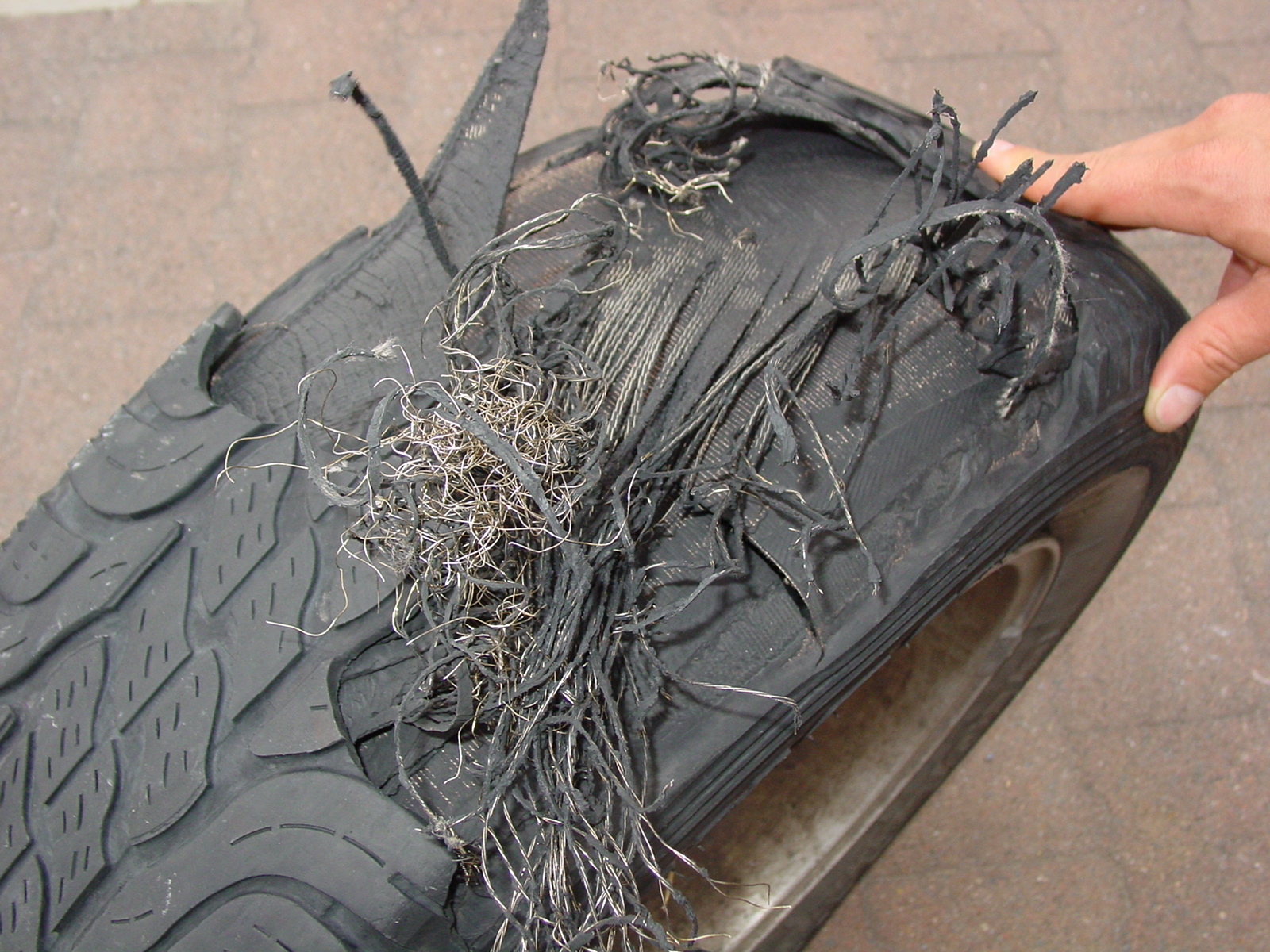Tyres are a really important aspect of our business. A lot of our training revolves around it because it is after all, the one and only contact patch between you and the road. The other issue is that they’re also expensive, so a little TLC is in order to maximise the return on your hard-earned. There’s a couple of illustrations below of tyre destruction (see pics), one a run-flat resulting in a super-heated sidewall exploding and the other a spectacular delamination, where the whole tread face has separated from the carcasse.
Now to the cause. In the case of the run-flat it can usually be explained away via the old over-inflation saga. The tyre is a standard fitment Yokohama Geolander “P” or Passenger car tyre. Now when a vehicle maker asks a tyre supplier to sell them thousands of tyres over a period of a vehicle’s lifetime they want a tyre that suits the bulk of the likely buying audience and unfortunately these days 90% of the 4WD buying public have no intention of going bush. So a tyre is selected for its on-road bitumen manners around town rather than its off-road potential. That means a 9mm tread depth, a higher speed rating and a lower load index, the perfect recipe for the blacktop. This same tyre in this case has been asked to drive in the north of South Australia in the APY Lands, where the bitumen is just about non-existent.
An inexperienced driver probably has no concept of what a tyre placard might be or what it means. You need to seek it out, the silver or white sticker by the driver’s door pillar or on your glovebox lid. It’ll state (depending on vehicle) the axle load limits, tyre size, wheel size, pressure front and rear and maybe more about load index selection. Some of the info re tyre size will look like this:
265/65R17 112 H = 265mm wide, 65% of tread width becomes the height of the sidewall, R = radial, 17″ diameter wheel with a 112 load index = 1,120kg carrying capacity and H = 210kph speed rating
The pressure recommendations stump a lot of people because in this case the placard says the tyres should only be inflated to 210kPa = 29psi. Many people would look at that and think it way under-inflated, but the truth is it’s right for that type of construction. Now here comes the tricky bit. Run that tyre at 210kPa or more on a gravel road for any length of time and you’ll get a puncture, especially if you drive too quick on a less than perfect surface. With a tight tyre of flimsy construction, driven at high speed (typically 100-120kph), a passenger car 4WD tyre will fail. No contest.
In here we’ve always recommended a 20% reduction in pressure (from placard recommendation) accompanied by a 20% reduction in speed (that’s no faster than 80kph) and it works wonders. We can’t guarantee it’ll work every time, but it will improve your chances considerably. A better bet though is replacing the tyres with “LT” or Light Truck construction. Combine those recommendations and you’ll likely make yourself puncture-proof.
In the case of this tyre it was over-inflated, we’d hazard a guess around 250kPa = 36psi or more, driven over gravels at 100kph to the point where a sharp gravel has penetrated the carcasse and started a slow leak. Now the beauty with tubeless tyres is that rather an immediate full loss of pressure and loss of control (that’s why split rims and tubes are crap), tubeless go down gradually, giving you time to react and an astute driver will recognise the tell-tale signs that the vehicle is now handling at less than what it was prior to puncture. Bring the vehicle to a gentle halt in that initial period and you’ll likely have a tyre that’s repairable. That wasn’t the case here, the vehicle was driven and driven and driven, losing air pressure with every kilometre until bang, the super-heated sidewalls explode, leaving the result you see below. Luckily the rim didn’t hit the deck because if it had it too would have been ruined.
The second illustration showing delamination is usually the result of a big impact and likely around town. We wouldn’t mind betting the sidewall got clobbered against a kerb and the internal forces sheared a section of tread from its carcasse and the process of unravelling commenced. The final act was likely at speed, the air in the pocket of separation gets hot, becomes bigger and bigger resembling a hernia. By this stage there should have been a pronounced shimmy in that wheel alerting the driver to a major failure about to occur, and then bang! In this case the tread face has fallen off tearing the bond between layers of rubber and canvas and steel belts and leaving a rats-nest of strands all tangled up. The tyre is toast.
So the message is pay attention to the condition of your tyres, look at tread depth, look for anything unusual like cuts, bulges and check your pressures… REGULARLY!




